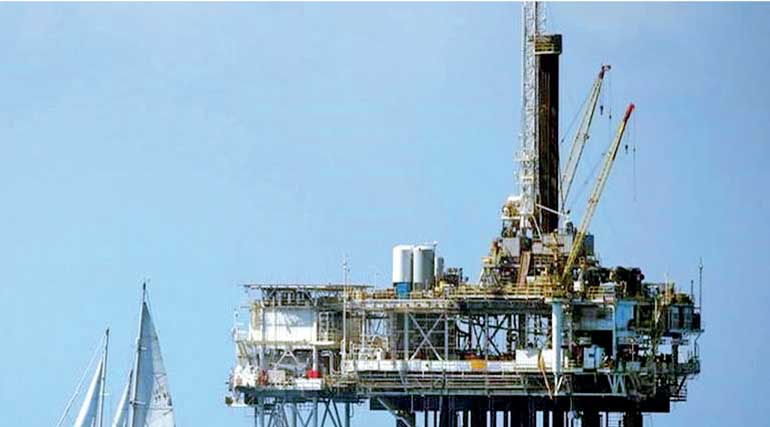Wednesday Jul 02, 2025
Wednesday Jul 02, 2025
Monday, 15 January 2018 00:00 - - {{hitsCtrl.values.hits}}
SINGAPORE (Reuters): Oil prices have risen above $70 per barrel for the first time since 2014 as investors bet supply cuts led by OPEC will dominate the market this year.
But some traders are sounding a warning – the world’s biggest crude consuming region, Asia, is showing signs of an impending downward correction.

Prices for Brent crude oil futures, the international benchmark for oil prices, have risen by more than 50% since mid-2017 and hit $70 per barrel this week for the first since December 2014. Average Asian physical crude oil prices also moved over $70 per barrel in January.
“A healthy (price) correction could be on the cards,” said Stephen Innes, head of trading for Asia/Pacific at futures brokerage Oanda in Singapore.
One reason, traders say, is that the supply of oil products remains ample. In the last three years, refiners enjoyed high profits because of relatively cheap crude oil, which is used to make fuels like diesel or gasoline.
As a result, Asian refiners processed an unprecedented 23 million barrels per day (bpd) of crude oil in late 2017.
China, by far Asia’s biggest oil consumer, is now producing so much fuel that its refiners have turned to exports to find buyers. And their purchases of crude could fall.
Chinese diesel exports have surged by almost 3,000% since early 2015, to a record of more than 2 million tonnes last December, according to customs data. Its gasoline exports are up by 365% since early 2015, to more than 1 million tonnes in December.
Its total December refined oil products reached a record 6.17 million tonnes, according to customs data announced on Friday.
“This drop in margins could reduce Asian refiners’ demand for incremental crude in the near term and weigh on global (crude) prices,” said Sukrit Vijayakar, director of energy consultancy Trifecta.
Singapore refining margins, which act as Asia’s benchmark, have slumped by 90% from their 2017 high, to below $6 per barrel this week – the lowest seasonal level in five years.
BMI Research said in a note this week: “In Q1, the balance of risk to Brent (prices) lies to the downside.”
The crude market’s focus has so far been on signs of tightening supplies as the Middle East dominated Organization of the Petroleum Exporting Countries (OPEC) and Russia lead production cuts aimed at propping up prices.
With global oil consumption also strong amid healthy global economic growth, investor sentiment has been positive.
Ole Hansen, head of commodity strategy at Saxo Bank, said this week that “bullish news tends to get more attention than potentially bearish signals.”
Yet, another of the bearish signals is rising US oil production, which is threatening to derail OPEC’s and Russia’s efforts to tighten supplies.
Despite a recent drop due to extreme cold, US crude oil output is widely expected to break through 10 million bpd soon, largely thanks to shale production, which would take it to similar levels as top producers Saudi Arabia and Russia, who hit peak output of over 11 million bpd and about 10.7 million bpd respectively in recent years.
“Oil prices have been undeniably bullish this week despite the lingering concerns over the current bull rally running out of steam . . . It must be kept in mind that rising production from US shale has the ability to expose oil to downside risks,” said Lukman Otunuga, Analyst at futures brokerage FXTM. The US Energy Information Administration (EIA) expects US output to surpass 11 million bpd by 2019.
Soaring US supplies mean US WTI crude prices are over $5.5 per barrel cheaper than Brent, off which most international crude supplies are priced.
Taking advantage of their competitive prices, US crude oil exports are rising, including to faraway Asia.
Feeling the pinch from mounting competition and the pressure from refiners, OPEC’s No.2 and No.3 producers, Iran and Iraq, cut their crude oil prices this week to remain competitive with customers struggling from lower profits.
Discover Kapruka, the leading online shopping platform in Sri Lanka, where you can conveniently send Gifts and Flowers to your loved ones for any event including Valentine ’s Day. Explore a wide range of popular Shopping Categories on Kapruka, including Toys, Groceries, Electronics, Birthday Cakes, Fruits, Chocolates, Flower Bouquets, Clothing, Watches, Lingerie, Gift Sets and Jewellery. Also if you’re interested in selling with Kapruka, Partner Central by Kapruka is the best solution to start with. Moreover, through Kapruka Global Shop, you can also enjoy the convenience of purchasing products from renowned platforms like Amazon and eBay and have them delivered to Sri Lanka.
Discover Kapruka, the leading online shopping platform in Sri Lanka, where you can conveniently send Gifts and Flowers to your loved ones for any event including Valentine ’s Day. Explore a wide range of popular Shopping Categories on Kapruka, including Toys, Groceries, Electronics, Birthday Cakes, Fruits, Chocolates, Flower Bouquets, Clothing, Watches, Lingerie, Gift Sets and Jewellery. Also if you’re interested in selling with Kapruka, Partner Central by Kapruka is the best solution to start with. Moreover, through Kapruka Global Shop, you can also enjoy the convenience of purchasing products from renowned platforms like Amazon and eBay and have them delivered to Sri Lanka.